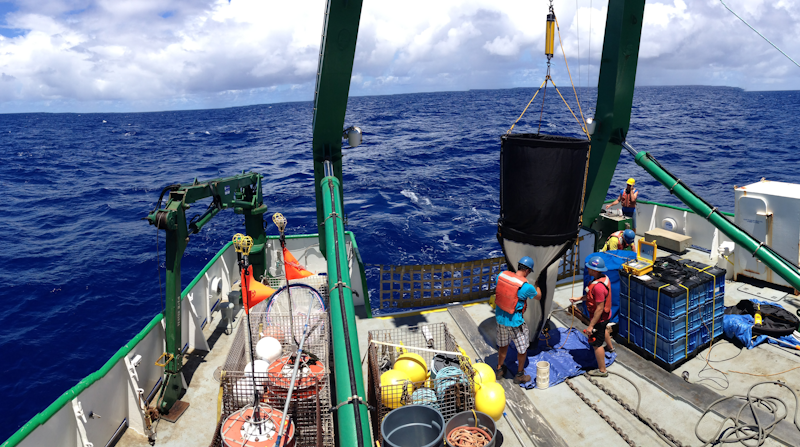
The goals of SCOPE-ALOHA are:
- To promote cross-disciplinary interactions to advance our understanding of microbial processes, ecosystem dynamics and biogeochemical consequences at a site representative of the NPSG
- To understand emergent properties of ecosystems through studies of microbial community structure and function over highly resolved, nested spatial and temporal scales
- To generate and test hypotheses that focus on microbial community-mediated matter and energy transformations, and the interlinked roles of microbes in energy capture, nutrient transformations and carbon export to the deep sea
- To understand the properties of relevant model microbes in terms of their genetic and metabolic diversity and their role in ecosystem processes
- To test and validate new theory and use it as a framework to interpret the structure and dynamics of microbial communities, and their roles in the NPSG ecosystem
To achieve these goals, SCOPE-ALOHA encompasses three research themes:
Theme I. The microbial trade market at Station ALOHA. Fluxes of matter, energy and genetic information at Station ALOHA are governed by the organization, structure and complexity of species, populations and community assemblages in marine plankton. Furthermore, the macromolecular information content (DNA/RNA/protein) of the plankton community encodes the network instructions that specify community structure, organization, function and interactions. Studies focus on laboratory experiments and studies of pure and mixed cultures (and their gene content, regulation and physiology) as model systems that are relevant to the Station ALOHA ecosystem.
Theme II. High-resolution spatial and temporal dynamics: from genes, populations and communities, to biogeochemical cycles and ecosystem function. Sampling microbial processes at appropriate spatial and temporal scales in situ will enable quantitative understanding of the dynamics of microbial inputs and outputs. The goal is to produce and analyze highly resolved, four-dimensional field-based ‘motion pictures’ of the genetic, taxonomic, transcriptional, metabolic, physical and chemical fields that drive the ecological dynamics of microbes at Station ALOHA.
Theme III. Microbes, energy, matter and gravity: fluxes into the ocean interior at Station ALOHA. Rates of primary production in the NPSG are directly linked to solar radiation. Less predictable are the conditions that create aperiodic seasonal phytoplankton blooms, the specific microbial assemblages associated with those blooms, and the biogeochemical processes responsible for export and transformation of phytoplankton-derived fluxes to the deep sea. SCOPE-ALOHA aims to resolve some of these uncertainties with high-resolution observations of episodic bloom dynamics, model and theory.
For more information, visit the SCOPE-ALOHA website.